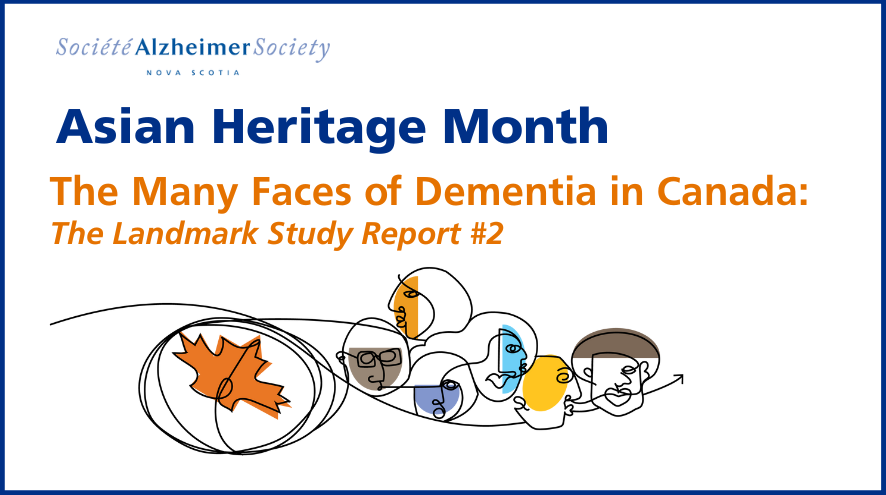Asian Heritage Month: The Many Faces of Dementia in Canada
Learn more about dementia in Asian communities.

In January, the Alzheimer Society of Canada released the second volume of the Landmark Study, The Many Faces of Dementia in Canada.
Over the next year, we'll be releasing education pages on each chapter. You'll have the opportunity to learn more about this study, what it means for Nova Scotians, and what resources are available to help. We will share local statistics, identify resources, and hear from Nova Scotians about ways in which their cultures and social identities are related to their experience on the dementia journey.
Today we’re talking about Chapter 3, Ethnic and Racial Diversity of People Affected by Dementia (read the chapter here). In honour of Asian Heritage Month, we’re talking specifically about Dementia in Asian Communities.
This chapter covers aging and Canada’s multicultural population, hypothesizes why there are differences in dementia rates across ethnic and racial groups, explores differing levels of care and calls for more research.
This discussion occurs within a context and acknowledgement of the importance of the social determinants of health. The ability to mitigate risk, diagnose and care for someone living with dementia all exist within a growing need of understanding the many intersections of our identities that affect dementia care and the need for increased research.
The study predicted that by 2050, the number of people of Asian origin living with dementia in Nova Scotia is expected to increase by nearly 700%
Indo-Canadian, Shehien Hamza, shared how acknowledging her Mum’s Indian heritage was supportive:
“Mum and I have really enjoyed Artful Afternoon because we could compare art work from around the world. Often my Mum’s art had a touch of the Indian architecture or landscapes, because that is what is going on in her mind; her life in India not the present. She was always praised and encouraged. Her work, and even her clothes, were always complimented which made her feel proud of her heritage.”
Learn more about Shahien’s caregiving journey here.
Find a fact sheet about Dementia in Asian Communities here.
Resources connected to this Chapter can be found here:
- Video: Experiences of dementia in South Asian communities
- Video: Perspectives on brain health in Chinese communities in Canada
- Dementia, Your Companion Guide (Guides available in diverse languages)
- Navigating dementia care in the South Asian community: Overcoming barriers and stigma
- Immigrant Services Association of Nova Scotia (ISANS) - become a client at ISANS to access supports for refugees and newcomers
- Video: My Journey with my Mom (Shahien Hamza speaks about her caregiving journey with her Mum)
Stay tuned for our next blog over the summer where we will be looking at Chapter 4 Sex and Gender Differences in Dementia.
If you see yourself in this report, or are a community organization or healthcare provider and have suggestions on how we can better support you and your community, we invite you to contact us by email at [email protected] or phone at 1-800-611-6345.).
